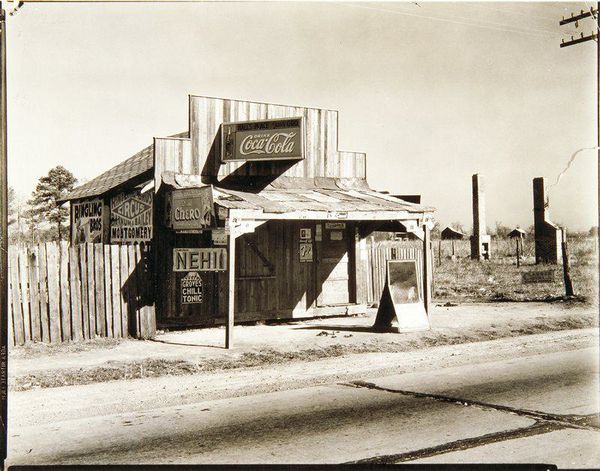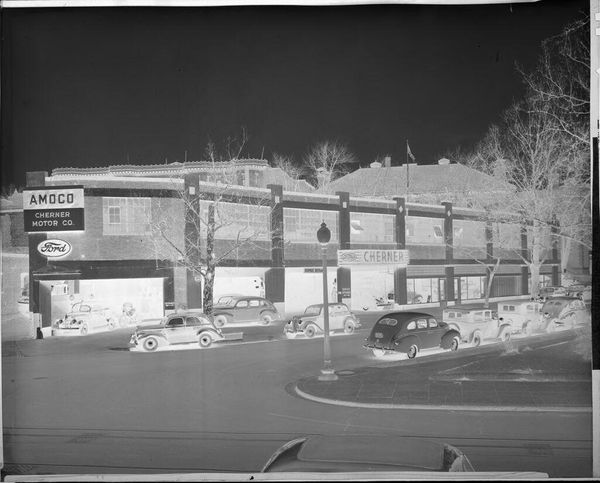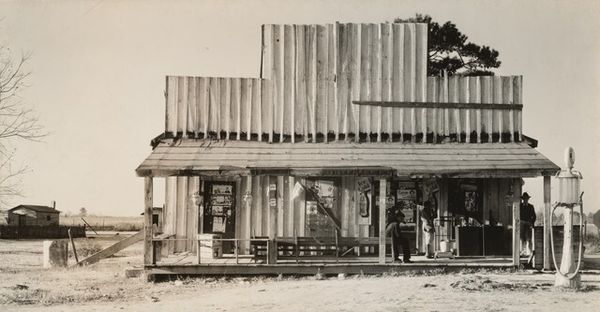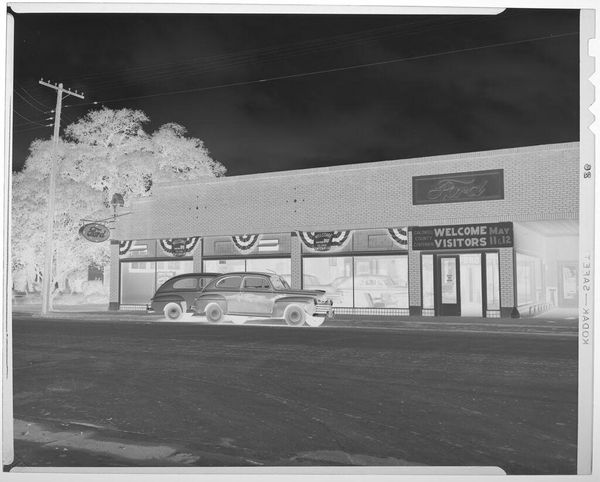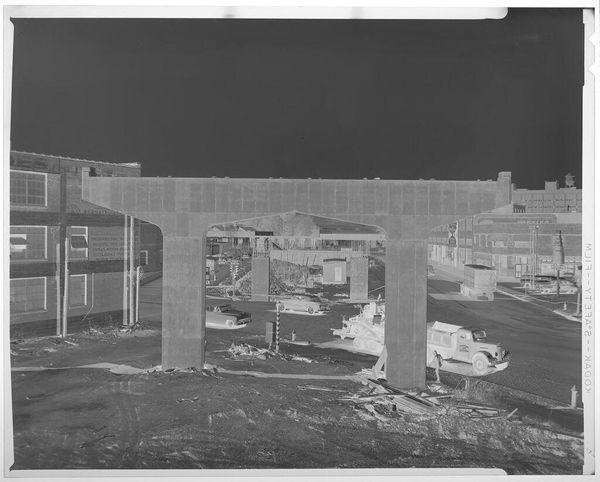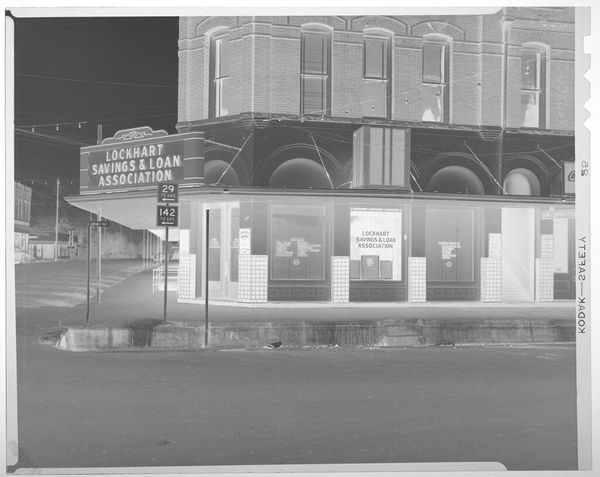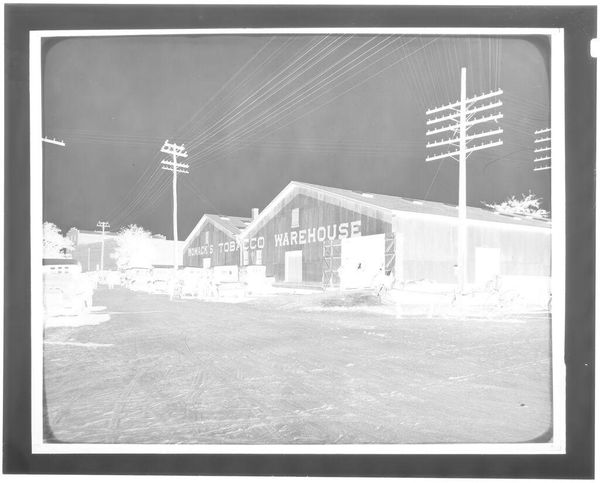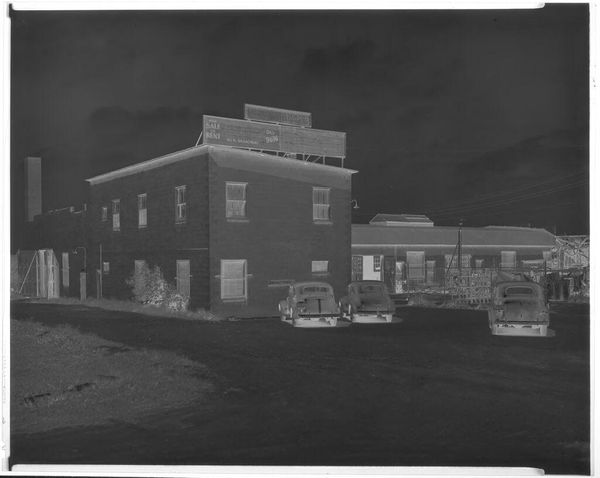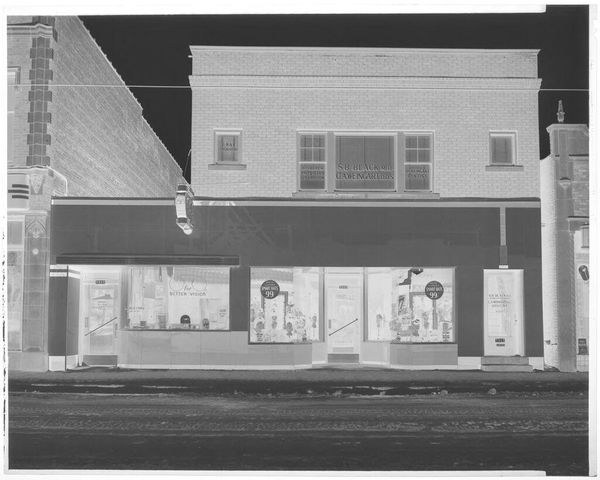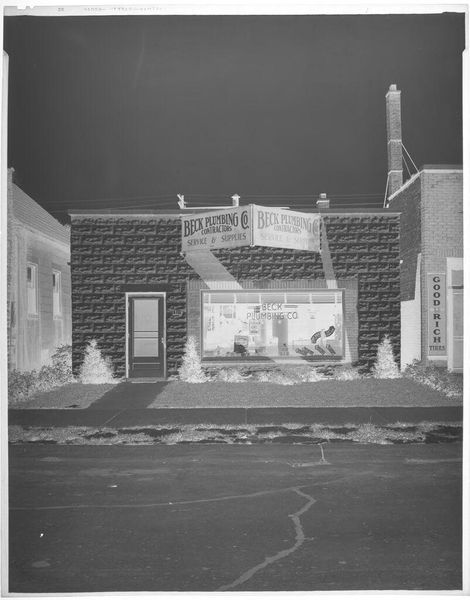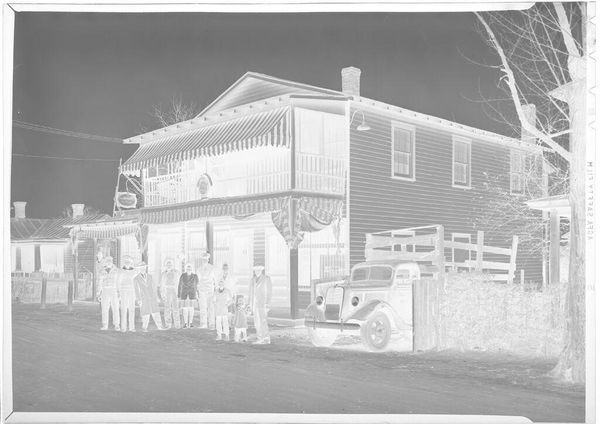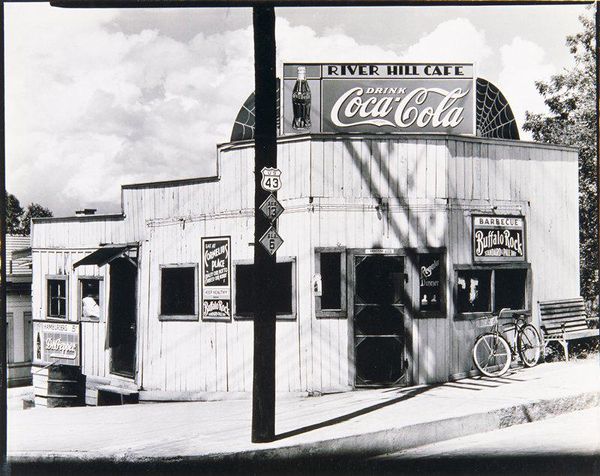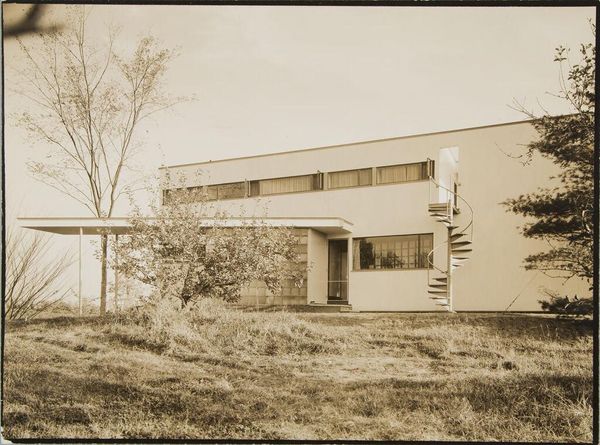
gelatin-silver-print, photography, gelatin-silver-print
#
gelatin-silver-print
#
black and white photography
#
landscape
#
photography
#
gelatin-silver-print
#
monochrome photography
#
ashcan-school
#
cityscape
#
realism
#
monochrome
Dimensions: 7 5/8 x 9 9/16 in. (19.37 x 24.29 cm) (image)8 x 9 15/16 in. (20.32 x 25.24 cm) (sheet)14 1/4 x 18 1/4 x 15/16 in. (36.2 x 46.36 x 2.38 cm) (outer frame)
Copyright: No Copyright - United States
Curator: Stark, almost brutally so. The stark monochrome really amplifies that feeling of… functional poverty. Editor: Exactly! Walker Evans' 1936 gelatin-silver print, titled "Tin Building," part of the collection here at the Minneapolis Institute of Art, confronts us with the realities of Depression-era America. What catches your eye in terms of the physical properties of the piece? Curator: The rough texture of the corrugated tin siding. It looks hastily assembled, almost temporary, with a crude pile of material in front. It’s the labor made visible—raw, unglamorous. The Ashcan School roots are really showing here, almost more concerned with social truth-telling than any aesthetic ambition. Editor: Absolutely. The composition invites a reading that implicates a wider sphere of social analysis: this image goes beyond a simple portrait of a building. Note the sign, “Richard Perkins, Contractor,” it signifies both enterprise and potential vulnerability in an economy in turmoil. Evans’ focus directs us to the material conditions of laborers during the Great Depression. The reality that while there are “contractors” there are also unemployed workers who cannot work. Curator: The medium really enhances this reading. Evans chose photography, which, as a mechanical medium, brings with it that connotation of objectivity, a direct capture of reality, the almost unmediated view. I am compelled to think of what kinds of labor constructed it and what conditions prevailed in the space as labor unfolded to produce something to be consumed. Editor: The seemingly straightforward image invites deeper questioning. This is not just about aesthetics, it’s a commentary on American society. It invites the audience to examine what underpins the physical space it portrays; that in every element, including how the very laborers' are situated under specific systems and power. Curator: It forces one to remember, art isn’t divorced from the everyday realities of building, constructing, selling… of working. It’s an honest appraisal, an important one, I’d argue. Editor: Precisely. It’s a photograph laden with a narrative urging the audience to reflect upon and maybe even contest, existing power structures and their ongoing, often hidden ramifications.
Comments
No comments
Be the first to comment and join the conversation on the ultimate creative platform.
